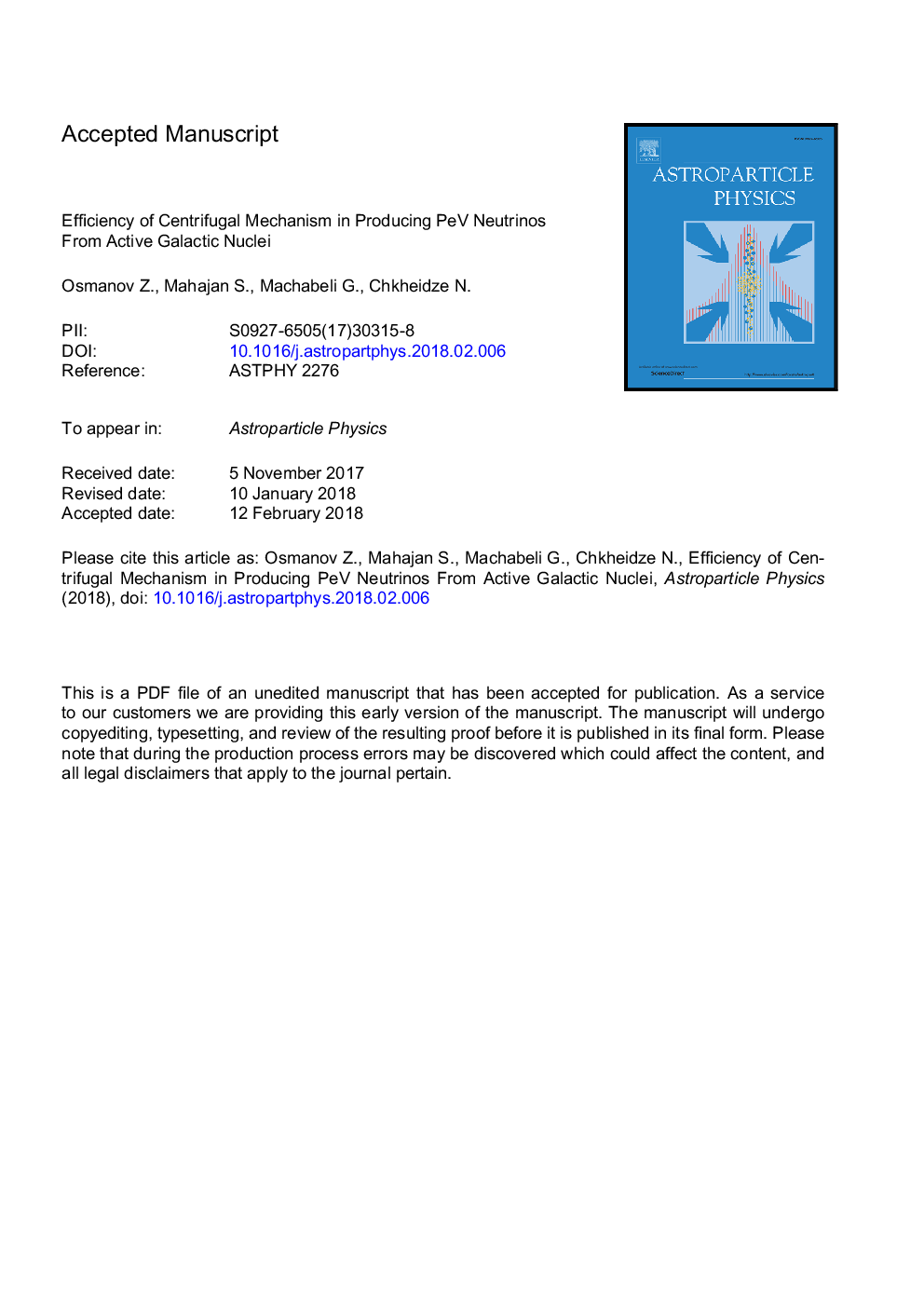| Article ID | Journal | Published Year | Pages | File Type |
|---|---|---|---|---|
| 8132713 | Astroparticle Physics | 2018 | 8 Pages |
Abstract
A several-step theoretical model is constructed to trace the origin of ultra high energy (UHE) [1â2] PeV neutrinos detected, recently, by the IceCube collaboration. Protons in the AGN magnetosphere, experiencing different gravitational centrifugal force, provide free energy for the parametric excitation of Langmuir waves via a generalized two-stream instability. Landau damping of these waves, outside the AGN magnetosphere, can accelerate protons to ultra high energies. The ultimate source for this mechanism, the Langmuir-Landau-Centrifugal-Drive (LLCD), is the gravitational energy of the compact object. The LLCD generated UHE protons provide the essential ingredient in the creation of UHE neutrinos via appropriate hadronic reactions; protons of energy 1017 eV can be generated in the plasmas surrounding AGN with bolometric luminosities of the order of 1043 ergs sâ1. By estimating the diffusive energy flux of extragalactic neutrinos in the energy interval [1â2] PeV, we find that an acceptably small fraction 0.003% of the total bolometric luminosity will suffice to create the observed fluxes of extragalactic ultra-high energy neutrinos.
Related Topics
Physical Sciences and Engineering
Physics and Astronomy
Astronomy and Astrophysics
Authors
Zaza Osmanov, Swadesh Mahajan, George Machabeli, Nino Chkheidze,
